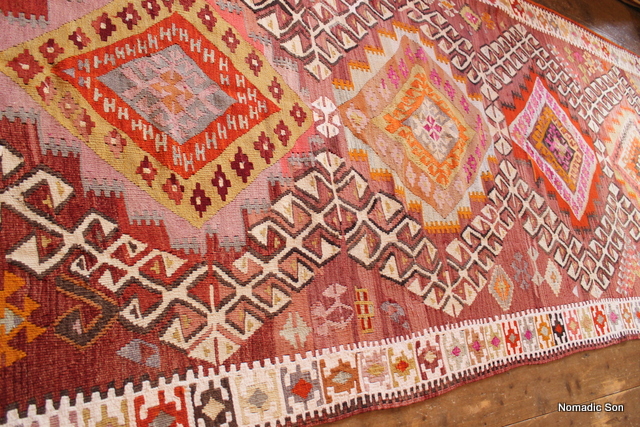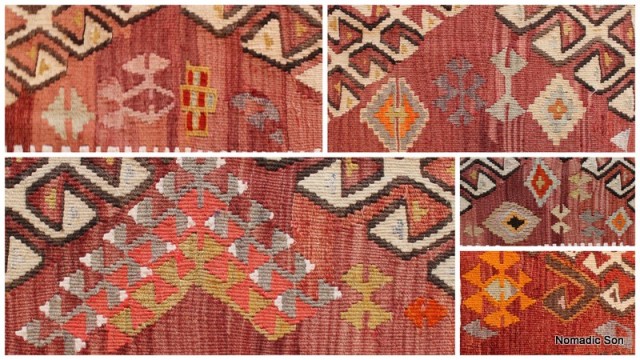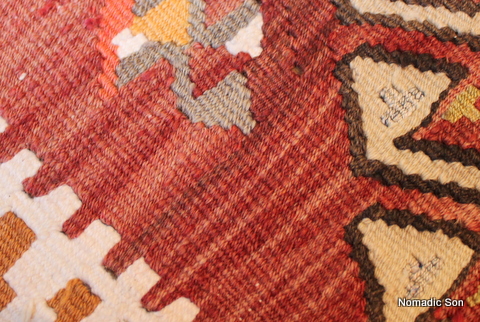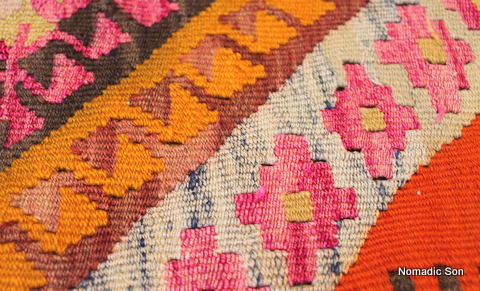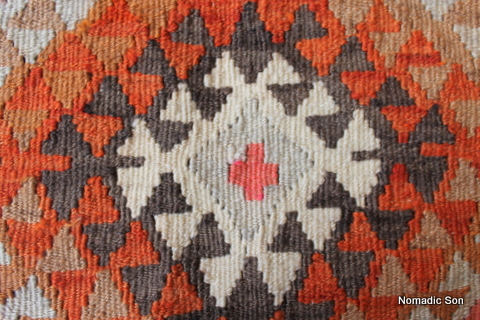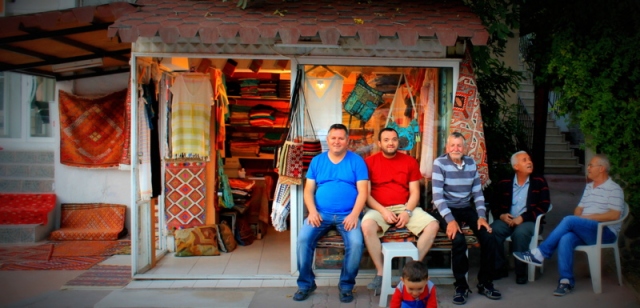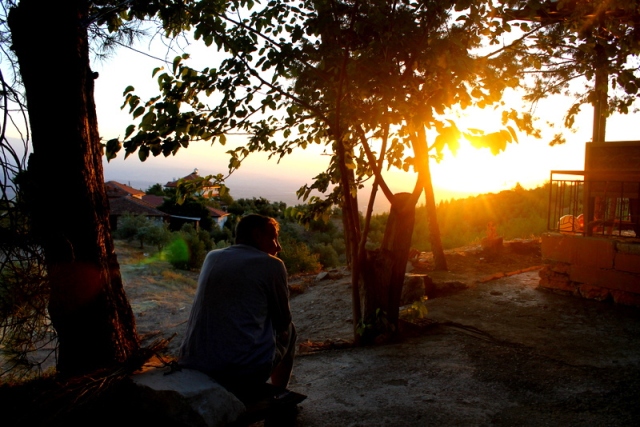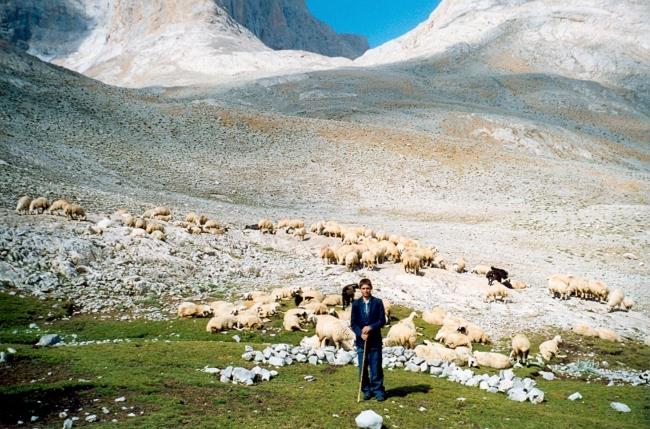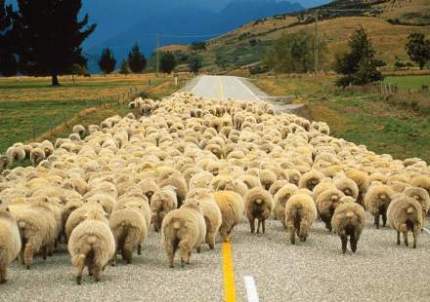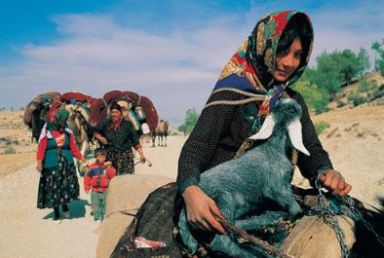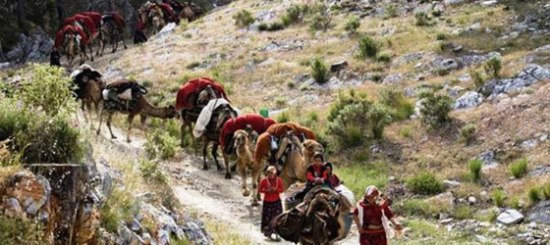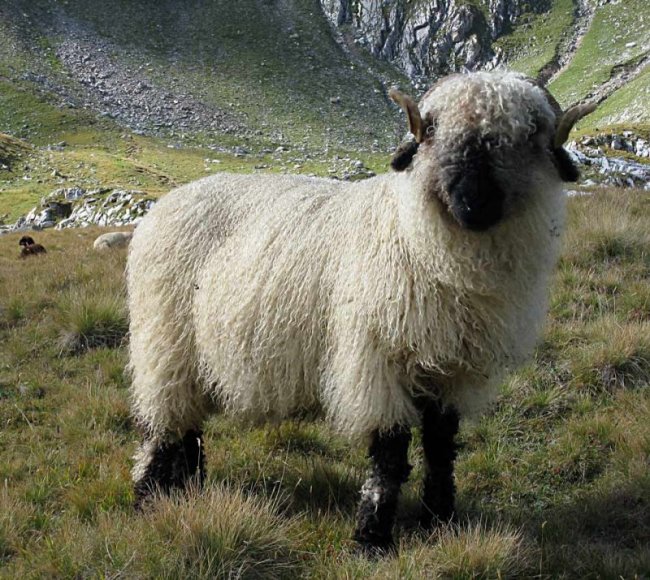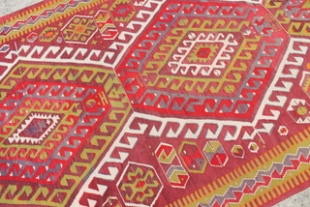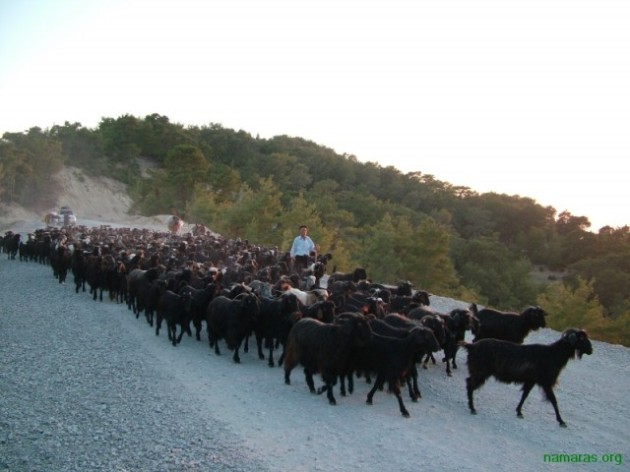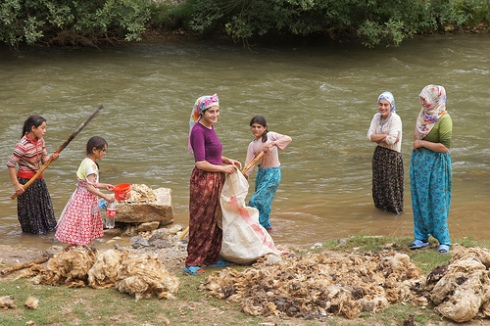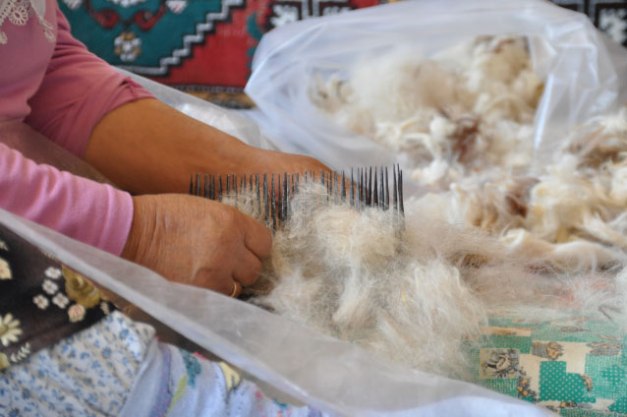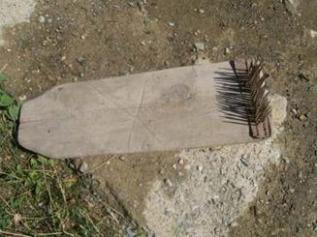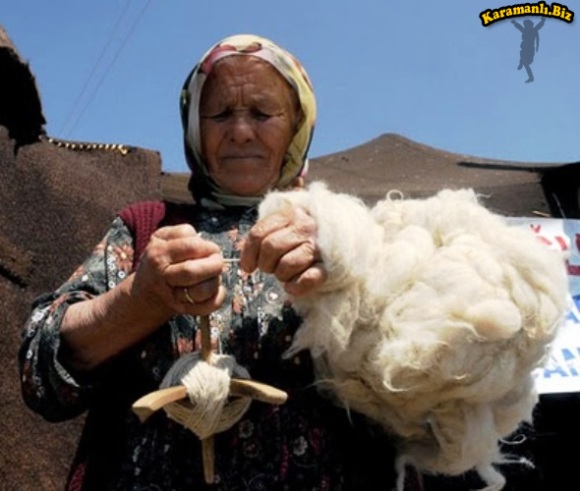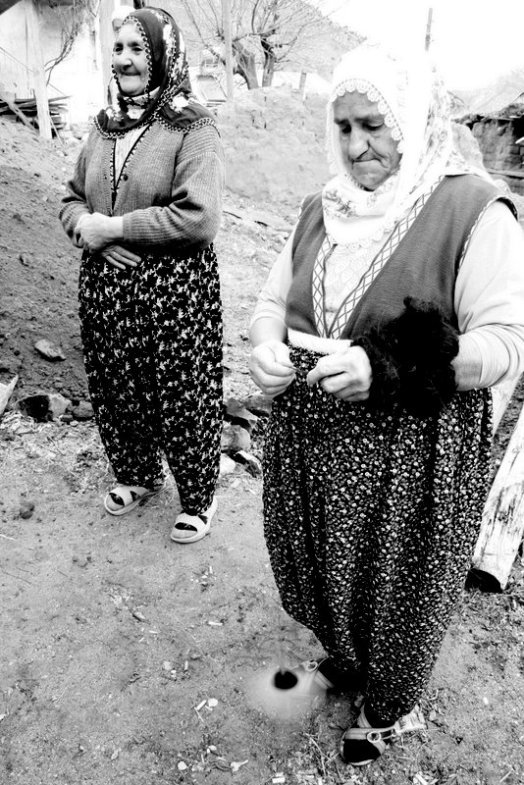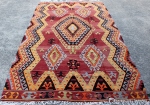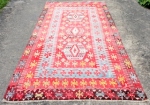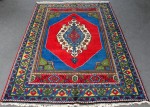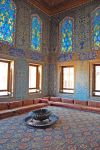Kilim of the month:
An absolute joy to behold! It doesn’t matter how many times I look at this kilim, I am always finding something else to admire. The maker of this piece did such an amazing job. We were commenting on how much fun it seems she must have had making this. Which I guess is a strange assumption to make but the energy and joy emulating from this kilim is truly palpable.
So, the technical stuff out of the way. This kilim is approximately 70-80 years old and completely hand woven (of course! What machine could create such beauty!!). It was woven using 100% hand spun wool only and was woven in the slit weave technique. This creates the ‘gaps’ seen throughout the kilim.
We (and others) were slightly undecided about the providence of this kilim so we have left it as Western Anatolia. It could be Sivas, Milas, even Aydin….perhaps Antalya region?
And to the fun stuff: Just a few pics of what I love the most about this piece.
The first is the 4 and ½ central medallions, all different to each other in colour and design but working together seamlessly to create such an interesting piece.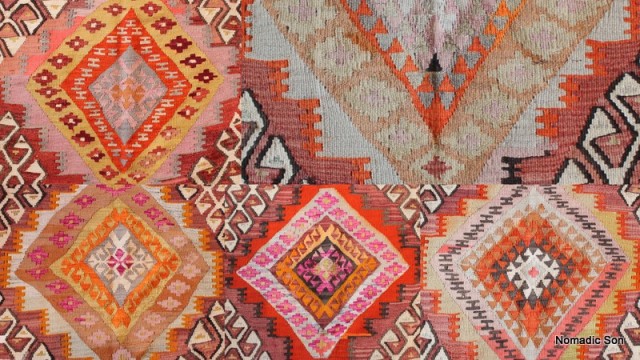
Next and perhaps my personal favourite is the differences between the filler motifs found between the concentric hooks and the borders. Every single section has completely different motifs. Traditionally these spaces are filled by family and friends of the weaver, almost like a signature or tag that they were there, weaving with her at that time.
Usually there appears to be some resemblance of order still in the filler motifs but not so in this piece. The motifs and their scale are all different. Some seem incomplete, some are evenly spread out, others cramped together. It just all works together when it probably shouldn’t.
My partner’s favourite part: the border. The changing colour combinations, the finesse of the workmanship, all beautifully presented and framing the kilim masterfully.
Another notable feature is the natural abrash flowing throughout. The hand spun wool and the natural dying process creates uneven tones in the wool.
On the down side (if you see it as such) the edges aren’t entirely even but to me that just reinforces the notion that something made by hand, over a period of time will show some testament to its process; and I still love it…
This kilim has just arrived in our new shipment and can be viewed and purchased here.

